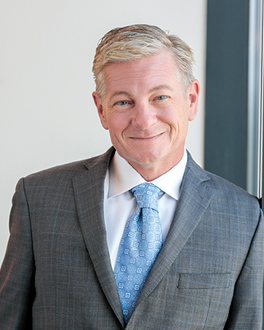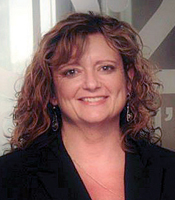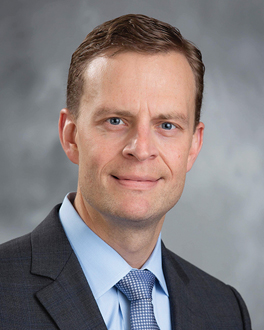ADVERTORIAL
Today’s health care professionals are continually doing more with less. Day in and day out, skilled nursing facilities and post-acute care centers are balancing their biggest priority—delivering quality care to residents and patients—with new and shifting challenges like workforce shortages and agency costs. For these reasons and more, finding reliable partners across the continuum of care is becoming an increasingly important aspect of any center’s long-term success.
Continue Care is a new transitional care management program from the trusted partners at PharMerica and BrightSpring Health Services’ family of providers. This program aims to address the gaps in care that exist when an individual is transitioning from a skilled care facility to their own home.
 “There is an obvious and palpable loss of visibility when individuals move from a skilled nursing care center to their own residence,” said Jeremy Colvin, PharMerica’s Senior Vice President, Growth and Market Development. “From the moment a person goes to the hospital or care center, they have a care plan in place. In too many cases, this care plan effectively stops when the individual is discharged. Most skilled nursing care centers aren’t equipped to follow individuals as they adjust at home, and unfortunately, this is a critical time in a person’s health.”
“There is an obvious and palpable loss of visibility when individuals move from a skilled nursing care center to their own residence,” said Jeremy Colvin, PharMerica’s Senior Vice President, Growth and Market Development. “From the moment a person goes to the hospital or care center, they have a care plan in place. In too many cases, this care plan effectively stops when the individual is discharged. Most skilled nursing care centers aren’t equipped to follow individuals as they adjust at home, and unfortunately, this is a critical time in a person’s health.”
By combining PharMerica’s pharmacy services with home-based primary care and nurse outreach services from BrightSpring Health Services’ family of providers, Continue Care aims to be the partner that skilled nursing facilities can rely on to ensure the success of their residents as they transition home.
 “I have been doing in-home patient visits for more than 22 years,” said Dr. Elizabeth Shauen Howard, DHA, MSN, RN, COS-C, Vice President of Clinical Services and Innovation for BrightSpring. “The biggest single risk factor for individuals who are managing their own care at home is medication management. Prescriptions can be difficult to keep organized, and adherence to their prescription program is essential for maintaining health at home.”
“I have been doing in-home patient visits for more than 22 years,” said Dr. Elizabeth Shauen Howard, DHA, MSN, RN, COS-C, Vice President of Clinical Services and Innovation for BrightSpring. “The biggest single risk factor for individuals who are managing their own care at home is medication management. Prescriptions can be difficult to keep organized, and adherence to their prescription program is essential for maintaining health at home.”
In Dr. Howard’s experience, the scene is similar in many patients’ homes. They’ve just come home from the skilled nursing care center, where they were cared for by a team of professionals. Their meals were cooked for them, activities were planned, medications were managed on strict timelines, and household items like laundry and cleaning were handled by staff or loved ones. Suddenly, they’re back in their home, sometimes alone. Previously prescribed medications often still remain in the home, creating confusion about which medications to take and at what times. Their bedroom may be on the second floor, and they aren’t strong enough yet to safely go up and down the stairs.
 “From a patient’s standpoint, this can be a very overwhelming time for a person as they transition from a hospital or a skilled nursing care center to their home,” said Dr. Bill Mills, Senior Vice President of Medical Affairs for BrightSpring. “Medicare has recognized the fact that coordination between sites of care is critical, and, as a field, we need to optimize transitions of care. It’s the right thing to do.”
“From a patient’s standpoint, this can be a very overwhelming time for a person as they transition from a hospital or a skilled nursing care center to their home,” said Dr. Bill Mills, Senior Vice President of Medical Affairs for BrightSpring. “Medicare has recognized the fact that coordination between sites of care is critical, and, as a field, we need to optimize transitions of care. It’s the right thing to do.”
A lack of support during this transition—and the many changes residents face when they get back home—have real impacts for both the individuals and their care providers. One in every five people who are discharged from an acute care setting is readmitted to a hospital within 30 days. This may be due to difficulty understanding discharge instructions and medication regimens, inadequate follow up and referrals, and unmet social needs.
The answer to this challenge is creating a better support system for individuals as they transition home. Continue Care integrates seamlessly into a facility’s discharge planning process to extend care management into the home by offering:
■ A 14-day supply of medications for residents to take with them when they leave plus up to an additional 30-day supply reviewed and reconciled by a pharmacist and delivered to their home in easy-to-use packaging to improve access and adherence.
■ Weekly phone calls from a nurse starting within 48 hours of the resident’s return home to check on medication issues or health changes.
■ An in-home transitional care visit within days from one of the company’s medical providers, where available, to conduct a physical assessment and evaluate needs for skilled and unskilled care (with in-home medical care continuing thereafter on a patient-by-patient basis).
■ 24/7 nurse and pharmacist support for residents and their families.
7 proven ways skilled nursing facilities can support care transitions
1. �Conduct transition planning.
2. �Provide patient and family education.
3. �Oversee information transfer.
4. �Ensure follow-up care.
5. �Facilitate healthcare provider engagement.
6. �Demonstrate shared accountability across providers and organizations.
7. �Provide medication management.
In addition to helping the patient feel supported and secure at home, the Continue Care program has a direct impact on care centers, too. Studies have shown that home-based primary care is associated with a 50 percent reduction in hospital readmissions and a 20 percent reduction in emergency room visits. The readmissions rate of nursing facility patients back to the hospital is directly related to facility reimbursements, meaning fewer readmissions financially benefits centers.
“Implementing a program like Continue Care signals to other care providers that a center is doing what it needs to do to care for its residents and providing the support they need to stay healthy at home and prevent a readmission,” said Colvin. “Referral partners are going to shift dramatically based on who is sending people back to the hospital.”
All Continue Care services are provided at no cost to facilities or residents; residents are responsible for their regular copayment based on their pharmacy coverage. To learn more about implementing Continue Care, visit www.PharMerica.com/ContinueCare.